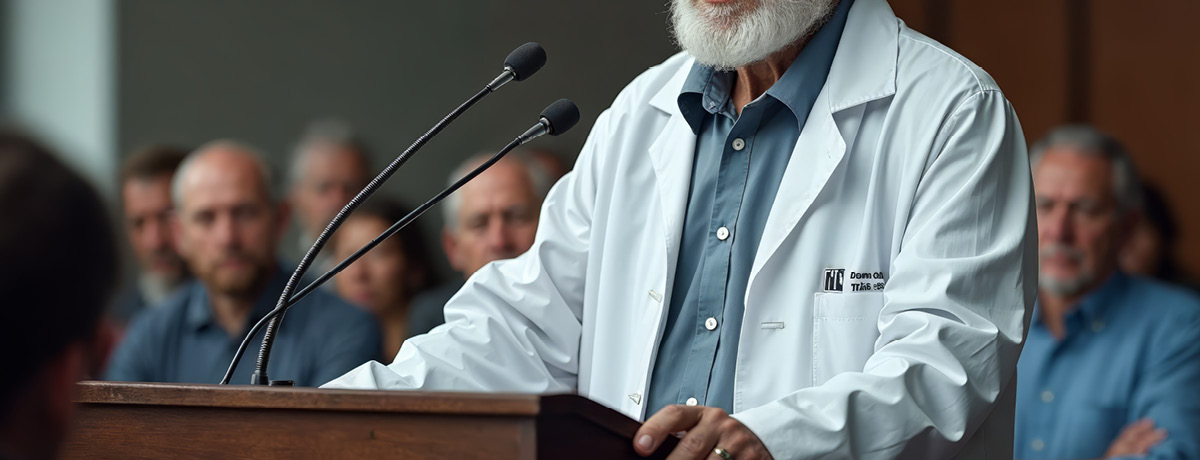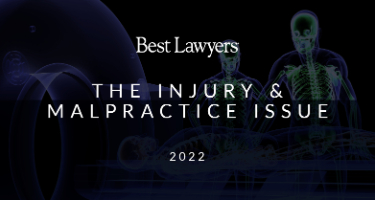Georgia has just pulled the trigger on its most sweeping tort reform since 2005—an exclamation point on a national trend already underway. Governor Brian Kemp’s signature on Senate Bills 68 and 69 rewires the entire framework of civil litigation in the state, reshaping how injury and liability cases will be fought, settled, and won.
What sets Georgia apart isn’t just the scope of the reforms—it’s the symbolic weight. As a fast-growing business hub with a politically ambitious governor, Georgia is positioning itself as a national test case, a place where conservative legal strategy meets economic muscle. The outcome here could influence legislative playbooks across the country, pushing tort reform even further into the national spotlight.
This is no isolated experiment. Georgia now stands alongside a wave of red and purple states pushing aggressive reforms to limit corporate liability and constrain plaintiff strategies. The stakes are high: insurers, hospitals, trucking companies, and retailers see it as a win for business predictability, while trial lawyers and victim advocates warn the state has narrowed the courthouse doors for everyday Georgians seeking justice.
Inside Georgia’s Tort Reform Law
Georgia’s new tort reform law rewrites core liability rules, reshapes trial strategy, and rewires the numbers behind damages.
Negligent security claims, a staple of premises liability litigation, are now boxed in by strict conditions. Plaintiffs must show the property owner or security contractor had prior knowledge of similar wrongful acts, confined to a 500-yard radius. Even if they clear that hurdle, the law presumes most of the fault belongs to the third-party criminal, not the business. This shifts fault lines sharply, forcing plaintiffs’ lawyers to dig deeper before filing and to attack built-in legal presumptions head-on.
Bodily injury and wrongful death cases now face a split trial structure, with fault and damages decided in separate phases. This cuts off emotional spillover, forcing juries to decide liability first before hearing how much the harm is worth.
It’s a defense lawyer’s dream—no sympathy bleed, no backdoor pressure. Exceptions are narrow: claims under $150,000 and certain sexual offense cases. For most litigants, this rule forces a wholesale shift in how cases are built and tried.
Noneconomic damages now come with stricter courtroom controls. Anchoring tactics, where lawyers float big dollar figures early to set juror expectations, are heavily restricted.
Under the new system, no side can argue or suggest specific amounts for noneconomic damages until after all evidence is presented, and only under defined rules. This isn’t a cosmetic tweak; it’s a direct strike at one of plaintiffs’ strongest trial tools.
Medical expense claims also take a hit. Plaintiffs can no longer seek the full face value of medical bills when large portions were written off or unpaid. Defendants can introduce evidence showing the actual amounts paid to satisfy the bills—often a fraction of the charged amounts. This sharply reduces the potential size of verdicts tied to medical costs and reshapes how damages experts will calculate economic loss.
On attorney fees, the law clamps down hard, cutting off recovery of duplicate fees, court costs, and litigation expenses, and it bars the use of contingent fee agreements as proof of reasonableness. For plaintiff-side firms, this has major implications on case selection and risk analysis, especially in cases where fee recovery helped offset lower damages or thinner margins.
Procedurally, discovery timelines are now a different game. If defendants file a motion to dismiss, discovery halts automatically. They also don’t need to file an answer until 15 days after the court rules on the motion.
Courts are now under the gun to issue rulings within 90 days of the briefing close. This ratchets up the pressure on plaintiffs to plead surgically and cuts off one of their key early-stage leverage points: aggressive discovery.
Discovery stays reshape leverage. Without early document access or depositions, plaintiffs lose crucial tools for uncovering patterns of misconduct or amplifying pressure on defendants. Defense teams, in contrast, gain a powerful cost-control mechanism, forcing the opposition to carry more weight upfront and turning early litigation into a surgical contest over pleadings and motions.
Litigation funding, long operating in the shadows, will soon face daylight. As of January 2026, third-party funders must register with the Georgia Department of Banking and Finance and comply with strict limits—no steering case strategy, no controlling settlement decisions, no false advertising. Funders who pour in $25,000 or more can be hit with joint liability on awards. Defense teams now have the right to request discovery into these funding arrangements, even if the details don’t automatically come into evidence at trial.
The Political and Power Dynamics Behind the Reform
Georgia’s tort reform overhaul didn’t appear out of thin air—it was driven hard by some of the most powerful players in the state. At the front of the push were business groups, insurers, and the Georgia Chamber of Commerce, all eager to rein in what they describe as runaway jury awards, unpredictable court rulings, and a legal climate too friendly to plaintiffs.
For years, they’ve argued that Georgia’s liability system had become a magnet for outsized payouts, driving up insurance premiums and leaving businesses—especially small businesses—vulnerable to legal shocks they can’t control. The Chamber’s messaging was sharp: civil justice reform wasn’t just good for the business climate, it was essential to keep Georgia competitive.
On the other side, plaintiff lawyers, abuse survivors, and civil justice advocates mounted fierce resistance. Their argument was simple and visceral: these reforms don’t target frivolous claims—they gut protections for real people.
For survivors of assault or abuse, narrowing negligent security liability could mean shutting the courthouse doors entirely. For victims of catastrophic injury, new limits on damages and courtroom strategy could turn an already uphill legal fight into a legal dead end.
Plaintiff lawyers warned that this was corporate self-protection dressed up as reform—stacking the deck for businesses, insurers, and defense firms while leaving ordinary Georgians with fewer ways to hold wrongdoers accountable. Civil rights groups joined the fight, framing the bill as part of a national rollback on access to justice, especially for marginalized communities.
Driving all of this was the political muscle of Governor Brian Kemp. Kemp didn’t just sign the legislation—he went all in, making tort reform a signature priority and using sharp-elbowed tactics to force it through. Kemp aligned himself with a broader conservative push to reshape civil justice nationally, turning Georgia into a showcase for delivering wins against what business leaders call a “litigation tax” on growth.
Business interests wanted a more predictable, defendant-friendly system. Plaintiff-side forces wanted to preserve, even expand, access to justice. And the political machine, led by Kemp, was more than willing to take sides—driving the legislation through not just as policy, but as a statement of priorities and political identity.
What Lawyers and Law Firms Need to Do Now
Georgia firms must rethink their internal systems, training trial teams on two-phase strategies and witness prep to avoid crossover pitfalls.
Intake screening has to get sharper. Marginal cases that once justified contingency investment may no longer survive under reduced damage models or tighter liability rules. Litigation budgeting must adjust, accounting for longer timelines on fault-only phases before any damages are in play.
Defense firms can treat Georgia as a live test lab. The new tools create opportunities to cut costs and control litigation exposure in ways that could reshape national practice.
Forward-thinking firms should document how these strategies play out, tracking savings, outcomes, and settlement patterns. That data becomes powerful ammunition when advising national clients or preparing for similar reforms in other states.
National firms need to move now, not later. Georgia’s law is a blueprint for where tort reform is heading, especially in states where business groups and conservative lawmakers hold sway. Litigation leaders should pull teams together to pressure-test current strategies, refresh risk models, and prepare client briefings. Firms representing insurers, national retailers, transportation companies, or healthcare networks need to explain how a Georgia-style shift would change exposure—not after the law lands, but before.
For plaintiff-side firms, the challenge cuts deeper. This isn’t just tactical adjustment—it’s business model recalibration. With anchoring limited, medical damages trimmed, and bifurcation fracturing trial narratives, contingency firms must rethink portfolio balance.
How much capital can be committed to long-shot or thin-margin cases? How should funding partnerships be structured to avoid new discovery and compliance risks? Should small firms form alliances to pool resources, share expert networks, or coordinate case strategies across state lines?
Adaptation isn’t the only play—advocacy matters too. Beyond recalibrating trial tactics, firms can push back by shaping appellate arguments, filing amicus briefs in test cases, or joining coalitions that challenge reforms in the courts or legislatures.
Some firms may even take on public education roles, spotlighting how these changes affect access to justice for ordinary people. Staying ahead doesn’t just mean surviving the new system; it can also mean helping shape what comes next.
Georgia’s Signal to the Nation
Georgia has fired a warning shot across the national litigation landscape—this is more than a local rewrite, it’s a signal. Business-backed tort reform isn’t confined to one state, and the political momentum behind it isn’t slowing.
For lawyers everywhere, the message is blunt: adapt your strategies to new procedural and political realities or risk being left behind. Legal strategies now operate in a system increasingly shaped by political winds, legislative muscle, and ideological alliances.
This isn’t just about Georgia—it’s about the direction of civil justice in America. Firms that recognize the shift, sharpen their approaches, and position themselves ahead of the next wave will survive and lead. Those that don’t will find themselves sidelined, watching as the ground under their practice erodes. The next phase of the tort wars has arrived—and Georgia is just the opening move.
































